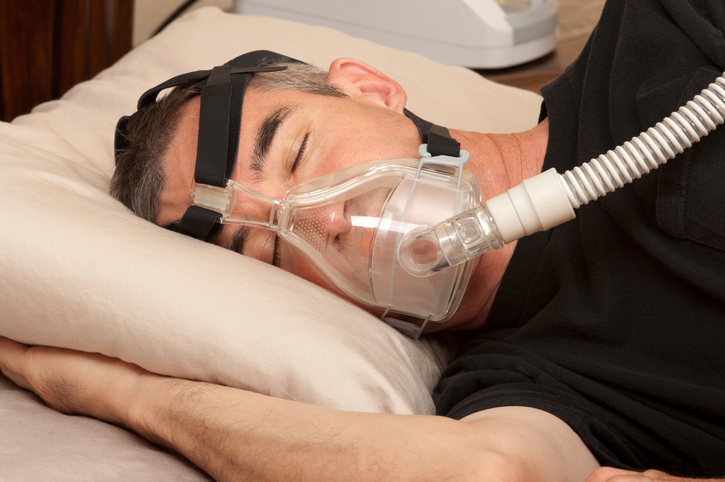LITTLE ROCK, Ark. — The typical truck driver is getting older.
Unfortunately, a majority of drivers smoke, and it’s common for them to be overweight, too. All of those things can contribute to health issues, such as high blood pressure, heart failure, stroke and, increasingly common, pulmonary issues. These include obstructive sleep apnea and chronic obstructive pulmonary disease (COPD).
Sleep apnea and COPD are names for different conditions, although they often occur together. Sleep apnea is a condition where you stop breathing while you’re sleeping. The stops are temporary, and you’ll eventually start breathing again. However, these episodes often occur with a sudden jerking or body movement that keeps you from falling into a state of restful, deep sleep.
COPD refers to a whole group of conditions that can range from emphysema to bronchitis. These conditions can make breathing difficult even when you’re awake. Both conditions can prevent you from being rested and alert during your driving and working periods.
In 2008, the Federal Motor Carrier Safety Administration published the Large Truck Crash Causation Study indicating that fatigue was a factor in 13% of crashes involving large trucks. The crashes resulted in at least one fatality over the test period. The evidence for this conclusion often came from sources such as log books that couldn’t prove adequate rest.
However, even adequate rest periods may not provide enough rest when sleep apnea or COPD are factors.
Like other health issues, sleep apnea and COPD can develop gradually, making it more difficult to notice that something is wrong and to seek treatment. Since many drivers are away from home for days or weeks at a time, scheduling doctor visits for evaluation or treatment can be difficult.
Time away from the road means loss of income for many, and who wants to spend their home time at medical facilities?
Unfortunately, putting off diagnosis and treatment comes with increased risk of an event you might not recover from. Some people, for example, have multiple heart attacks, while others only get one.
A fact of pulmonary issues is that your body can’t rest and rejuvenate itself without enough oxygen. Sleep apnea and COPD both deprive the lungs of oxygen, causing levels to fall in the bloodstream so that muscles, nerves and brain cells can’t be nourished properly. The result is that neither brain nor body function properly during waking hours.
It’s more than a health issue.
When your reaction and response times are slowed due to fatigue, the safety of others is at risk, too. You may have carefully planned your rest period and gotten plenty of sleep, but if you weren’t breathing properly, you most likely did not get enough rest.
It’s important that you recognize the warning signs of sleep apnea and COPD so that you can get tested and, if necessary, treated before disaster happens. But it’s easy to put off for one more week on the road or whatever reason seems good. After all, nothing happened today.
Diagnosis of sleep apnea and COPD often requires some testing.
Common testing includes overnight oximetry, a test that measures blood oxygen levels while you sleep, arterial blood gas testing and sleep apnea testing, the “gold standard” used to detect apnea. Sleep apnea testing (polysomnography) usually occurs in a medical facility and measures breathing patterns, blood oxygen, body positions and stages of sleep, including periods of rapid-eye movement sleep, the deep restful period you need to be fully alert the next day. A home version of this test is sometimes used, depending on doctor requirements and patient condition.
When sleep apnea or COPD is diagnosed, it can be treated in different ways.
For COPD, bronchodilator inhalers are often prescribed along with other medications. For sleep apnea and often for COPD, machines that maintain positive airway pressure are often prescribed. Continuous Positive Airway Pressure or Bilevel Positive Airway Pressure machines are commonly prescribed and are effective at reducing episodes of waking or gasping for breath during sleep.
In more severe cases of COPD, oxygen therapy may be prescribed. In cases where sleep apnea and COPD overlap, your doctor will decide if supplemental oxygen is necessary.
In many cases, sleep apnea and COPD can’t be cured, but treatments can make a big difference in how much energy you’ll have during waking hours. More rest can result in greater alertness and faster response times while driving, increasing safety for everyone.
If you fit in any of the categories commonly associated with sleep apnea and COPD (age, overweight, smoker), look for signs that you may need treatment. One of the first is complaints of frequent snoring from a spouse or someone else. If you have difficulty staying asleep or if you’re frequently sleepy during the daytime, it’s reasonable to suspect sleep apnea or COPD. Increased coughing is another symptom you may notice.
There are actions that you can take to alleviate the symptoms of sleep apnea even before you see your doctor. If you smoke, stop. Your heart and lungs will thank you. You’ll sleep better and have more energy. If you can lose weight it will also help. Eating sensibly on the road can be difficult and making time to exercise nearly impossible, but both can help you get to a more reasonable weight. It can be done if you’re serious about your health.
Of course, sleeping well doesn’t help if you don’t schedule enough time for rest. If the work you’re doing prevents you from getting enough sleep, a change is in order. It may mean getting a different route or assignment from your company, or even changing companies. It’s like going downhill, if you do nothing, you’ll continue your descent. To change direction will take effort on you part.
If you’re successful, you’ll improve your chances of living longer and you’ll be a safer driver, too.
Cliff Abbott is an experienced commercial vehicle driver and owner-operator who still holds a CDL in his home state of Alabama. In nearly 40 years in trucking, he’s been an instructor and trainer and has managed safety and recruiting operations for several carriers. Having never lost his love of the road, Cliff has written a book and hundreds of songs and has been writing for The Trucker for more than a decade.








